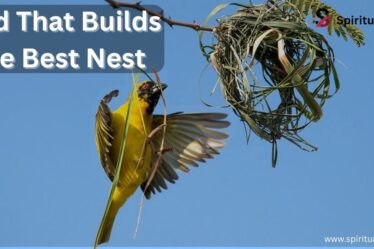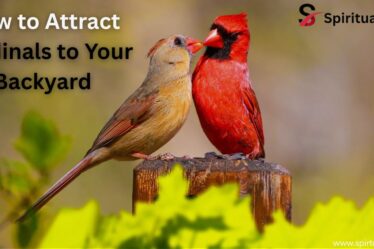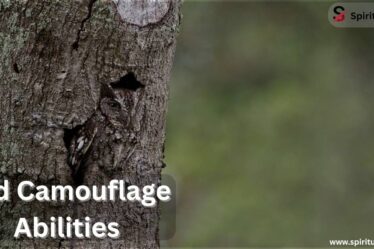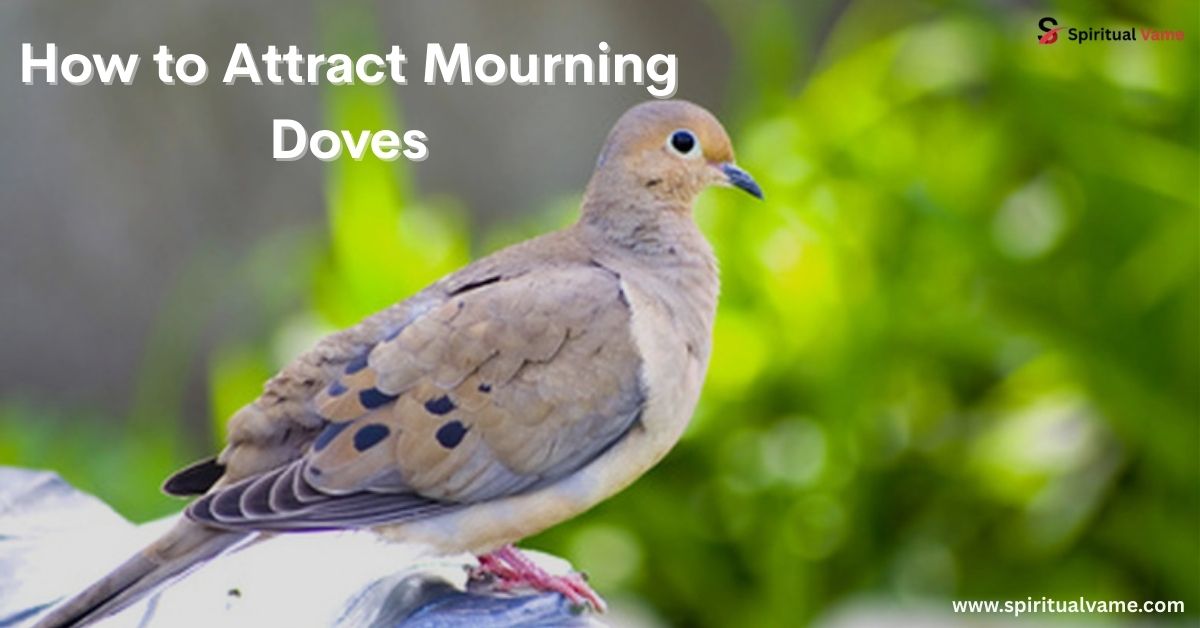
Welcoming mourning doves to your yard or property can bring peaceful beauty and calm to your outdoor space. Their soft cooing sounds, graceful flight, and gentle presence make them one of the most beloved backyard birds in the United States. Whether you’re a backyard birdwatcher or a landowner preparing for dove hunting season, learning how to attract mourning doves involves creating the right mix of food, shelter, water, and space. This guide will walk you through everything you need to know, using only practical and proven methods.
How Do You Attract Doves?
Attracting mourning doves starts with understanding their feeding habits, preferences, and comfort zones. These birds are ground foragers, so they love open spaces where they can feed without feeling threatened. You’ll want to create an area free of heavy vegetation or large obstructions, so they feel safe when they land. Keep the space quiet and calm, as loud disturbances or movements can scare them off. Think of this as building a peaceful little sanctuary where these birds can rest and refuel.
Another important step is providing the right kind of feeder. Platform feeders or tray feeders are ideal because mourning doves prefer to feed on flat, open surfaces. Avoid small perches or hanging tube feeders—they aren’t comfortable for these birds and could stop them from visiting altogether. You can place these feeders on the ground or slightly raised to keep them dry and cleaner. According to sources like Bird Feeder Hub and TheBirdsWorld, this setup closely mimics their natural behavior. Keep feeders filled and placed in open areas, and you’ll likely see these ground-feeding birds return daily.
Other Info About Them
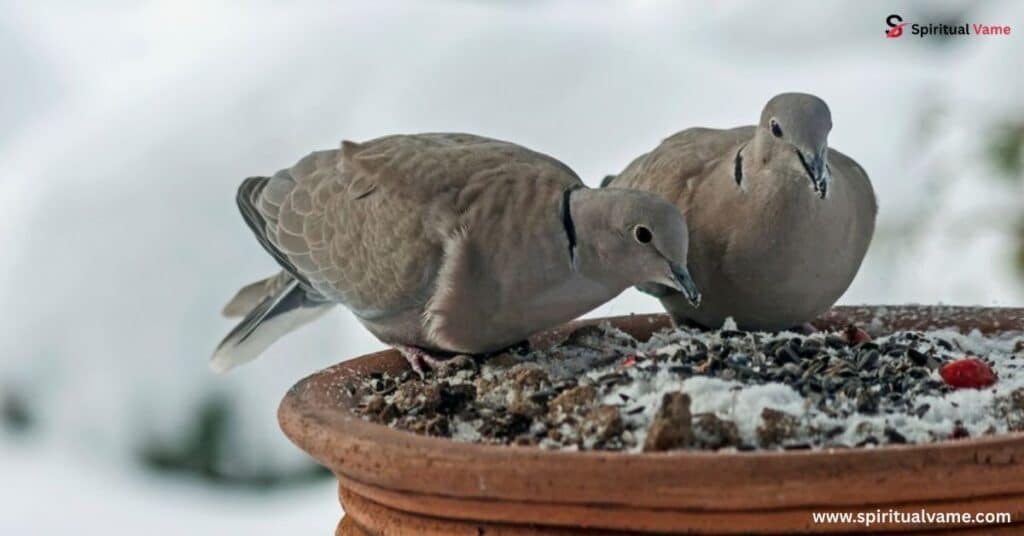
Mourning doves are easily recognized by their soft gray-brown feathers, long tails, and gentle nature. They’re among the most abundant birds in North America and often symbolize peace and devotion. Their name comes from their sorrowful cooing sounds, which many find calming. These doves are often seen perched on telephone wires, fences, or sitting quietly under feeders, blending into their environment.
What sets them apart from other doves is their adaptability. Mourning doves can live comfortably in both rural fields and busy suburban yards. They are fast flyers and can reach speeds up to 55 mph, making them a favorite among hunters. Despite their popularity, they are surprisingly shy, so a low-stress environment is key to keeping them around.
Do They Migrate?
Yes, mourning doves do migrate, especially in northern states where winters are harsh. They typically fly south for the winter, traveling in large groups to warmer areas. In southern parts of the U.S., some populations stay year-round. According to All About Birds, migration usually starts in late summer through early fall, depending on the weather and food availability.
Understanding their migration helps you know the best time to attract them. If you live in a colder region, set up feeders and shelters early in the season to catch them before they move on. If you’re in a southern or warmer area, you may be able to enjoy their company all year. Either way, timing is everything—once they feel safe and well-fed, they’ll keep coming back.
What Foods Do They Eat?
Mourning doves love a simple but nutritious diet. Their favorites include black-oil sunflower seeds, millet, cracked corn, and safflower seeds. These types of birdseed are small and easy for doves to pick up and swallow. They don’t crack shells like other birds, so offering shelled, clean, and mold-free seeds is important for their health and comfort.
It’s also good to note that mourning doves eat directly off the ground or from open feeders. They eat quickly and store seeds in their crops to digest later. This feeding style means they’re frequent visitors throughout the day. Mixing seeds with grains and even tiny nuts can help diversify their diet, but avoid adding anything processed or seasoned.
Where Do They Nest?
Mourning doves build their nests in trees, ledges, or even in hanging planters and gutters. Their nests are made from twigs, leaf litter, and other natural materials. While they may seem messy and fragile, these nests are surprisingly durable and well-hidden. They often return to the same nest sites year after year, especially if the area remains undisturbed.
If you want to encourage nesting, leave some native shrubs and small trees in your yard or property. These offer both cover and a safe place to rest. Avoid using pesticides, as they can harm the birds or reduce their access to insects and seeds. Creating a natural cover not only helps doves but also supports other bird species that share the space.
What Do They Look Like?
Mourning doves have slender, streamlined bodies with a small head, long tail, and a soft gray-brown color. Their wings have black spots, and their eyes are dark and expressive. When they fly, their wings make a sharp whistling sound that helps identify them even before you see them.
Juvenile doves look similar to adults but may have a slightly fluffier appearance and lack the full feather color. Because they’re often confused with similar birds like the Eurasian collared-dove, it’s helpful to learn the visual differences. Mourning doves are smaller and have a distinctive teardrop shape when perched.
Dove Range Maps
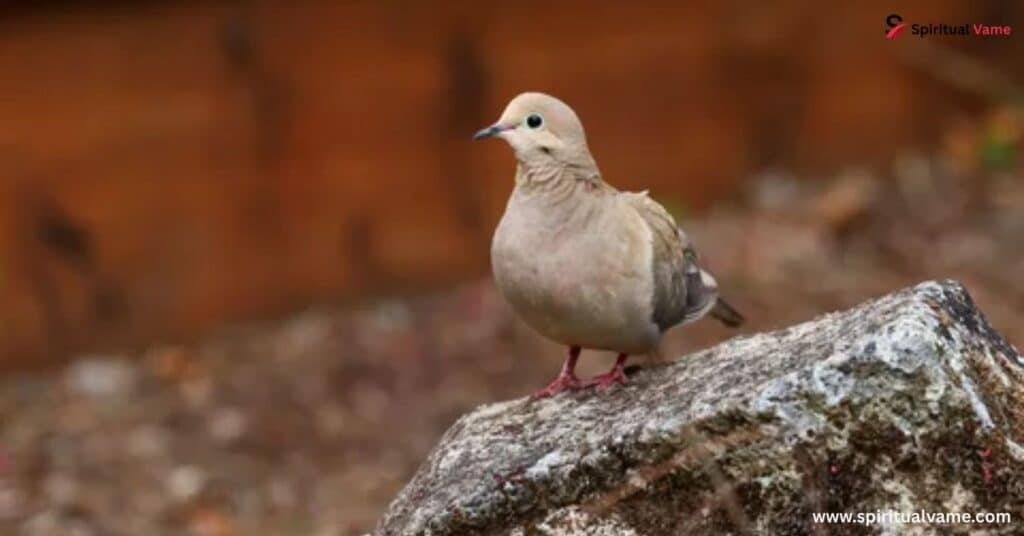
Mourning doves are found across nearly the entire United States, with some regions seeing them year-round and others only during migration seasons. The U.S. Fish & Wildlife Service and eBird provide range maps showing where they are most commonly seen.
In the southern U.S., especially in states like Texas, Florida, and Arizona, doves are permanent residents. Northern states like Minnesota or Maine see doves mostly in spring and summer. Knowing your local range helps plan the best times for feeder placement, food supply, and even dove hunting preparation.
How To Attract Mourning Doves To Your Yard
If you want mourning doves in your yard, focus on simplicity and peace. Avoid clutter, loud noises, or too many aggressive bird species. Keep things quiet and natural. Offer ground feeding areas, open perches, and plenty of space to rest and move around. Doves are more likely to visit if they feel safe and unbothered.
Add native shrubs, open lawn patches, and low-traffic areas. This combination allows for easy landing, feeding, and nesting. A small birdbath with clean water also helps, especially during hot weather when doves need extra hydration. Keep things clean and consistent, and soon you’ll have regular feathered guests.
Type of feeder to use to attract mourning doves
Platform feeders are your best bet for mourning doves. These feeders are flat and stable, giving the birds a comfortable place to perch and eat. Unlike small hanging feeders, tray feeders allow more space for multiple doves to feed at once. Keep them low to the ground or directly on the lawn for best results.
It’s important the feeder is placed in a quiet area without too many obstructions, so the birds feel secure while eating. Avoid feeders with narrow perches or deep containers. A flat, open design closely mimics their foraging behavior, which encourages repeat visits.
What to use in a feeder to attract mourning doves
Fill the feeder with black-oil sunflower seeds, millet, cracked corn, and safflower seeds. These are small enough for doves to swallow and provide good nutritional content. Make sure the seed is mold-free and replaced regularly, especially in wet weather. Spoiled seed can be harmful and will keep the birds away.
Some people mix in grains or nuts, but keep it natural. Doves aren’t picky eaters, but they do prefer food that’s easy to access. Once they find a reliable feeder, they often return multiple times a day.
What to avoid using in a feeder if you want to attract mourning doves
Skip large or sticky seeds, such as peanuts in shells or suet. Mourning doves can’t break open tough shells, and greasy foods can coat their feathers. Also, don’t use processed foods like bread or salty snacks—they’re not safe and provide no value to the birds.
Avoid feeders that swing too much or have small perches. These can feel unstable or uncomfortable. Keeping things simple, flat, and open is always best for these birds.
How To Attract Doves To Your Property
If you have more land to work with, creating a dove-friendly property involves planning for food, water, and shelter across open spaces. Plant native shrubs and low-growing natural cover around the edges of fields or open plots. These spots give doves places to rest and nest safely.
Leave some leaf litter and twigs in the area to support nesting. Also, reduce pesticide use to maintain a healthy food source of insects and natural seeds. By managing your land to fit their natural habitat, you’ll support not only doves but the entire local ecosystem.
What Makes for Good Dove Hunting?
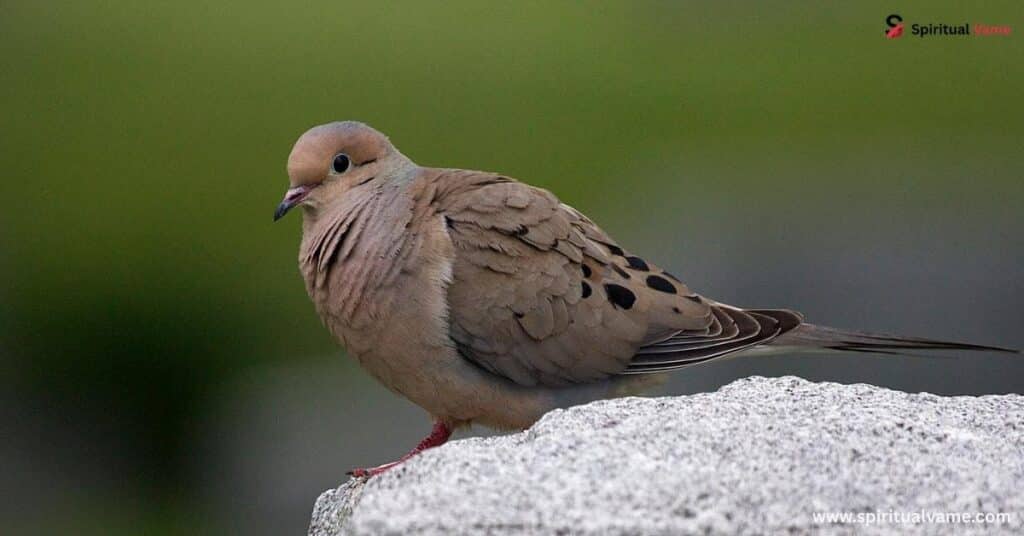
A good hunting area for doves has open flight paths, clean water sources, and plenty of food. Hunters often plant food plots near dove roosting areas to draw in flocks. Timing is also critical—dawn and dusk are when doves are most active.
Before hunting, check your state’s regulations, as dove hunting seasons and limits vary. Ethical hunting practices help keep the dove population healthy and ensure future generations can enjoy them as well.
Dove Food Plots
Planting food plots is a great way to attract mourning doves to your property. They love sunflowers, millet, wheat, and sorghum. These crops provide both food and shelter. Plots should be planted in late spring and managed to stay clear and open as doves like to feed on bare ground.
Harvesting part of the crop while leaving some seeds behind is a good way to keep them coming. Keep the area mowed or lightly tilled to expose fallen seeds—this mimics their natural feeding style.
Dove Waterholes
Water is just as important as food when it comes to attracting doves. Set up shallow birdbaths or dig small waterholes in open areas. Keep the water clean and refresh it often to avoid mosquito breeding and disease.
During hot weather, doves may visit water sources several times a day. These spots also attract other birds, so keeping things tidy is essential. Place a flat stone in the center to give doves a safe perch while drinking.
Dove Roosting Areas
Doves roost in quiet, elevated areas like trees, power lines, and even tall fences. You can encourage roosting by planting tree lines along fields or leaving sections of your property undisturbed. Keep these areas away from loud noises and traffic to avoid scaring the birds away.
Roosting sites are usually close to food and water, so think of them as a triangle: feed, drink, rest. Once doves find a reliable roost near their feeding zone, they’ll stick to it regularly.
Dove Hunting Tips
For successful dove hunting, scout your land early and take note of where doves land, feed, and fly. Use decoys to attract more birds, especially in open fields. Early morning and late afternoon are best, as that’s when doves are on the move.
Always check for local regulations and avoid hunting near active nesting areas. Use lightweight gear and stay quiet to avoid disturbing other wildlife. Patience and planning are the secrets to a good hunt.
Conclusion
Learning how to attract mourning doves is simple when you create the right space for them. Use platform feeders, keep the area quiet, and give them food they love like millet and sunflower seeds. Add clean water and let native shrubs grow for safe nesting. Keep pets and loud noises away. Doves need peace to feel safe.
If you want to know how to attract mourning doves, focus on food, water, and shelter. They return to places that feel calm and familiar. Once they find what they like, they’ll visit often. By understanding how to attract mourning doves, you’ll enjoy their soft sounds and peaceful presence all year.

